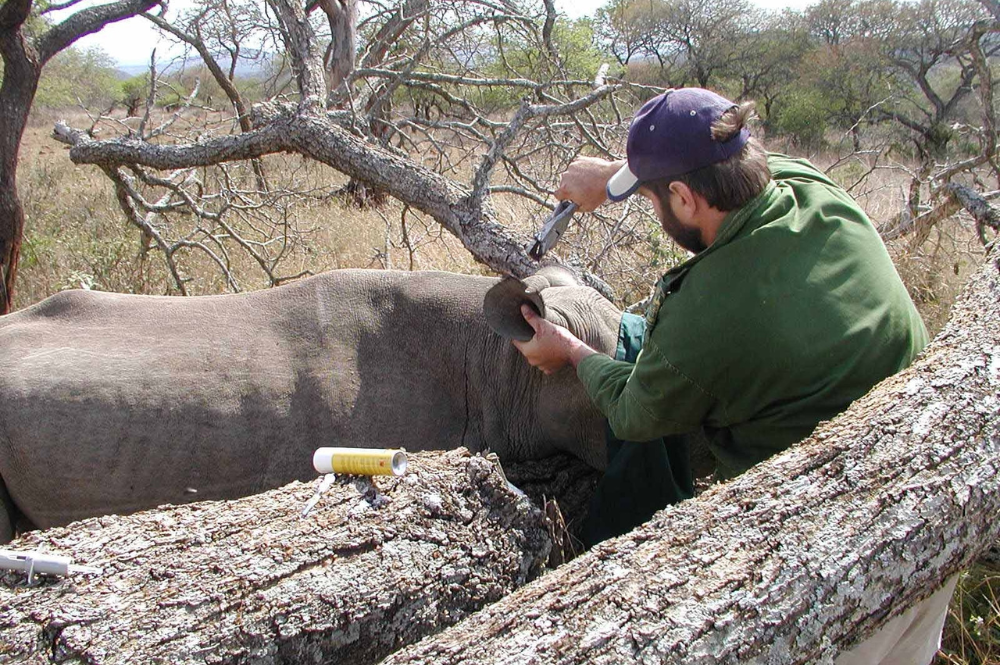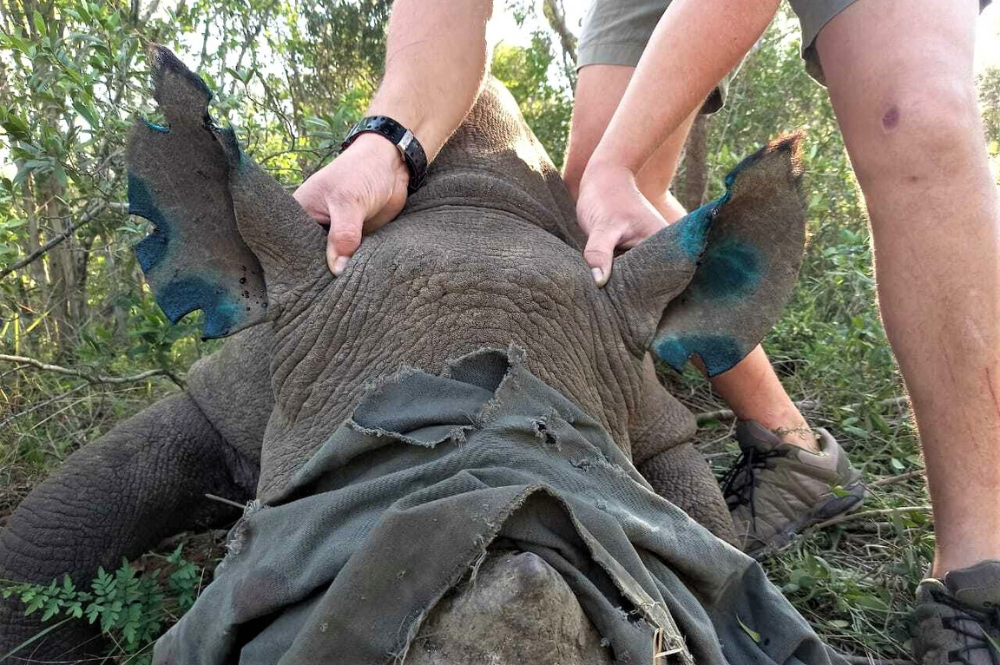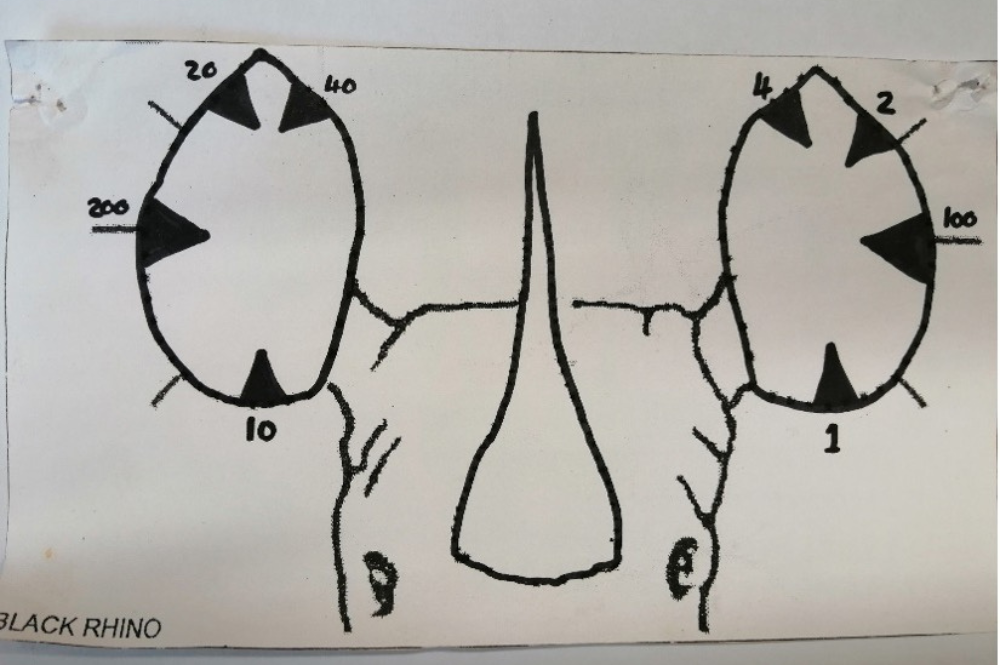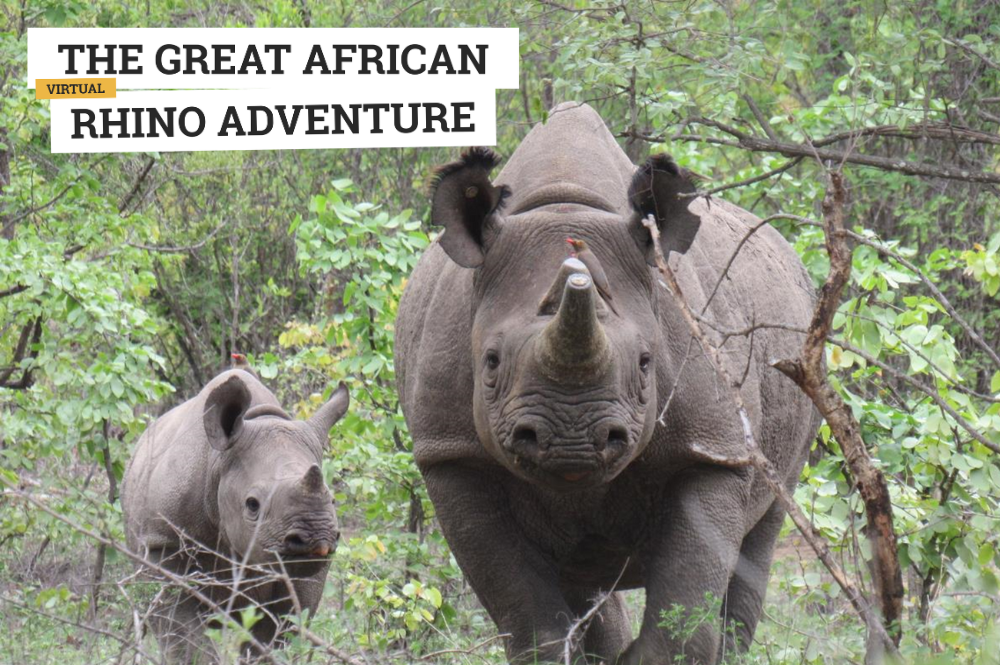
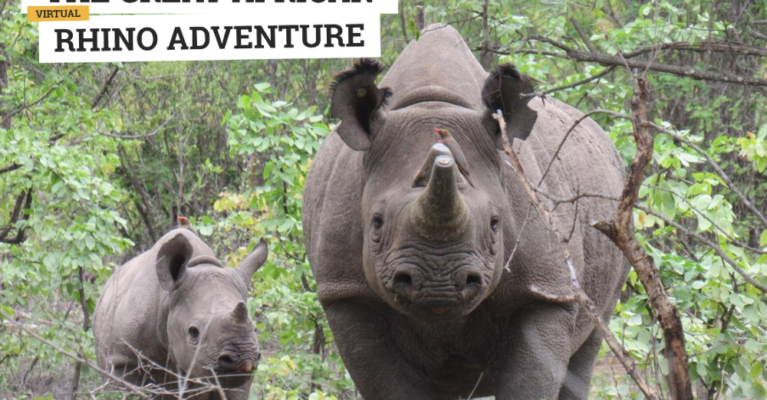
Credit: Lowveld Rhino Trust
From the Lowveld: Keeping close tabs on Zimbabwe’s rhinos
With more than 1,000 rhinos, Zimbabwe has one of Africa’s largest rhino populations. However, despite reaching this milestone by 2022, rhinos were once found in far greater numbers. Amidst the 1980s and early 90s, guerrilla militants stationed in the Zambezi Valley deterred prospective poachers from illegally killing rhinos here. However, following the loss of black rhinos from the Luangwa Valley in Zambia, and following and Zimbabwe’s independence in 1980, the militias moved out, making way for poaching gangs. By 1992, Zimbabwe’s rhino population had reduced to below 450.
Protecting the survivors, the decision was made to translocate ~300 rhinos south. Living in heavily protected yet idyllic habitats, these animals prospered, and their numbers swelled. Unfortunately, this was not to last.
Land reclamation under the country’s Fast Track Land Reform Policy was underway and with it came habitat clearance for agriculture and in turn, less rhino habitat and heightened poaching. Bubiana Conservancy, in the south-west of the country, became one such unsafe location and so, beginning in 2002, its rhinos were removed by the Lowveld Rhino Trust (LRT). Their destination? Bubye Valley Conservancy (BVC), a former cattle ranch turned wildlife conservancy.
Since then, LRT has overseen the monitoring of these rhinos, keeping close tabs on each animal by using differing combinations of triangular notches cut into the rhino’s ears. Each notch in a rhino’s ears represents a number. How many notches and their precise location gives a rhino its unique ID number overall, something that will last throughout its life. Using these numbers, Rhino Monitors can record an accurate picture of the population’s dynamics, which then help to inform wider management decisions.
Having a notching system to provide unique IDs might sound like a Rhino Monitors’ job is simple, but that’s far from the truth. Finding each rhino remains tough, particularly as black rhinos spend a lot of time in the dense bush of the Lowveld, making them hard to spot in general, let alone get an accurate sight of their ears. Nonetheless, LRT’s team continue to do a great job.
Last year, despite particularly thick vegetation, the team achieved more than their 80 rhino IDs per month target. When incorporating camera traps and aerial IDs, the rhino monitors achieved an impressive average of more than 160 IDs/month!
So, how are ear notches given?
- Notches can only be applied when a rhino is immobilised, which means a vet needs to be present to induce general anaesthesia and to apply appropriate pre- and post-notching treatment and care
- The notches themselves are cut using a specific notching tool and bleeding is controlled using forceps. A topical antibiotic is also applied before a rhino is woken up and released, helping to avoid infections
- Once the notches have been applied, photographs are taken of both the rhino’s ears in a ‘front on’ position as a record of the rhino’s notch pattern
- Ideally, rhinos should be notched before they become independent from their mothers, so that their maternity is confirmed as part of their identification
- These photos and life history are then used in a personal rhino file, which is used by monitors to track sightings data over time


